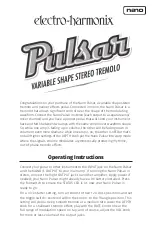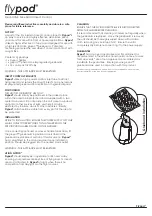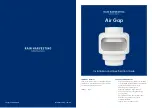
Safety
Warning:
The Oximeter is to be operated by qualified personnel only. Failure to read
this manual, accessory direction for use, all precautionary information, and
specifications could result in injury. Operators must comply with the included
Warnings, Cautions, and Notes to guarantee safe operation of the Oximeter.
Do not use the Oximeter for any purpose other than specified in this manual.
Doing so will invalidate the Oximeter’s warranty.
Also review Chapter 2,
Installing the Oximeter
on page 7 and Appendix D,
Symbol
Reference
on page 81. Additional Warnings, Cautions, and Notes that apply to specific
parameters are listed in the sections that pertain to each respective parameter.
Indications for Use
The noninvasive FORE-SIGHT ELITE Absolute Tissue Oximeter is intended for use as an
adjunct monitor of absolute regional hemoglobin oxygen saturation of blood under the Sensors in
individuals at risk for reduced-flow or no-flow ischemic states and is indicated for use as follows:
•
When used with large Sensors, the FORE-SIGHT ELITE Oximeter is indicated for use on
adults and transitional adolescents ≥ 40 kg (88.2 lbs).
•
When used with Medium Sensors, the FORE-SIGHT ELITE Oximeter is indicated for use
on pediatric subjects ≥ 3 kg (6.6 lbs).
•
When used with Small Sensors, the FORE-SIGHT ELITE Oximeter is indicated for
cerebral use on pediatric subjects < 8 kg (17.6 lbs) and non-cerebral use on pediatric
subjects < 5 kg (11 lbs).
Contraindications
The FORE-SIGHT ELITE Sensor is contraindicated for use on patients:
•
with a physical site area too limited for proper Sensor placement.
•
with allergic reactions to Sensor adhesive.
•
undergoing an MRI scan because of associate risk of injury.
No other contraindications were known at the time this guide was published.
Warning:
The Oximeter is intended only as an adjunct in patient assessment. It must be
used in conjunction with clinical signs and symptoms.
If the accuracy of any value displayed on the Oximeter is questionable,
determine the patient’s vital signs by alternative means. The functions of the
Alarm system for patient monitoring must be verified at regular intervals (every
six months) and whenever the integrity of the product is in doubt. Periodically
test all functions. Failure to comply may lead to injury.
xiv
CAS Medical Systems, Inc.
Preface: Safety















































